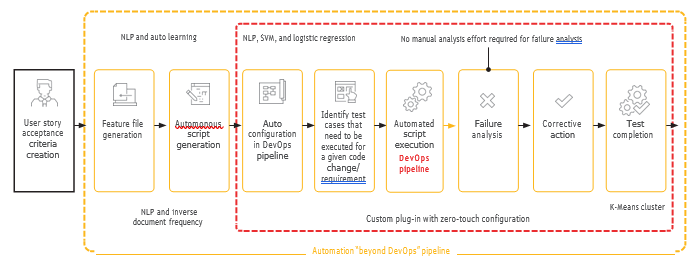
Thanks to Hexaware for providing us with this blog post.
Software testing is struggling to keep up with the fast-paced and constantly accelerating rate of releases. According to a survey by Gitlab in 2022, seven out of ten developers reported that their teams release code at least every few days, with many doing so on a daily basis. In today’s world, customers and end-users expect new features and functionality at an increasingly rapid pace. Companies that lag behind on new software releases risk being displaced by competitors who can keep up with the latest updates.
When testing fails to keep up with the release pace, organizations face well-known risks associated with releasing software that hasn’t been adequately tested and may contain bugs. For instance, in July 2022, former Volkswagen CEO Herbert Diess was forced out of the company because the automaker’s software unit was unable to produce software of sufficient quality, delaying the launch of its new Porsche, Audi, and Bentley models. Even more recently, in October 2022, Nintendo had to take Nintendo Switch Sports’ servers offline for nearly a week due to a bug that caused the game to crash.
Development teams have attempted to address this dilemma of either issuing potentially buggy software faster or slowing down to test sufficiently with test automation. However, there are significant challenges associated with how test automation is traditionally implemented, and automation still requires highly skilled testers who are always in high demand, making them difficult to hire and retain.
Testing organizations face challenges beyond just automating the creation of tests. Maintaining tests is equally challenging as automation scripts can become outdated and fail to test the required functions in the desired ways. Even with enough testers available, analyzing the impact of changes and configuring the test suite is too complicated to be performed manually. However, the problem extends beyond maintaining automated tests as human analysis cannot identify all areas that require testing.
To overcome these challenges, organizations need to move beyond automation and embrace autonomous testing.
AI-Powered Autonomous Testing
Autonomous testing is the solution to the challenges faced by testing organizations as it enables faster decision-making about which scenarios to test based on the impact of a change without relying too much on human involvement. This dramatically increases testing depth and scope while simultaneously speeding up the process.
In contrast, traditional test automation only addresses one stage of the testing process, which is the automated script execution in the DevOps pipeline, as illustrated in Figure 1.


Autonomous testing has the potential to significantly reduce the need for human involvement throughout the testing process (as shown in Figure 2), unlike traditional test automation, which only impacts script execution in the DevOps pipeline (as shown in Figure 1). By utilizing natural language processing (NLP) and machine learning (ML) technologies, organizations can automate the generation of feature files and autonomous scripts. With the addition of deep learning through a support vector machine (SVM), tests can be auto-configured, and cases can be identified for execution when there are changes to code or requirements. Autonomous testing can also perform failure analysis and take corrective action.
As the AI continues to learn from development behavior, test results, and other data, it becomes smarter and more accurate. For example, post-production logs are rarely used, but AI can analyze them and match them to post-production to identify previously unidentified “white spaces” that are likely to have bugs in the future and therefore require testing.
It is crucial to understand that autonomous testing is not a one-time fix, but a continual process of improvement, one case at a time. Organizations can start by identifying a specific bottleneck in the testing process that autonomous testing can address, such as the generation of UI/API scripts or identifying sensitive columns that require masking or synthetic data replacement. Ideally, the case should involve different functions for a particular phase to have a more significant impact. Once the solution has been successfully implemented and shown results, organizations can leverage that success to expand to a new case and continue to improve their testing process over time.
Think of it in terms of autonomous driving. Automakers first rolled out discrete capabilities such as automatic breaking to avoid hitting a stationary object, lane assist, and adaptive cruise control. Implementing autonomous testing requires a similar approach.
Organizations are under pressure to conduct extensive testing within a shorter time frame and with fewer resources, all while delivering high-quality software on schedule. Autonomous testing, powered by AI and ML, can help organizations achieve this goal, but it requires a strategic, long-term approach to implementation. The ultimate outcome is that development teams can release new features more frequently, leading to a better customer experience and a stronger bottom line for the organization.
Learn More
Listen to a Thoughtcast that answers key questions about autonomous software testing and explainshow to move seamlessly from automation.
Reach us at marketing@hexaware.com for more information.

Nagendra BS, Vice President – Digital Assurance, Practice & Solutions at Hexaware
Nagendra has around 21 years of experience in Software industry and is passionate about Quality and Testing and have helped number of customers in their testing transformation journey. He is currently responsible for Go to Market function of the Digital Assurance (Testing) business which includes creation of all service offerings, global presales support, alliances, analyst and marketing functions for Digital Assurance services.
Hexaware is an EXPO exhibitor at EuroSTAR 2023